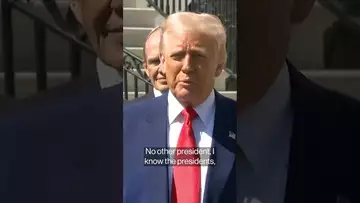Since the time you follow us on Croblanc, you are beginning to be used to hear about the Youtube channel Bloomberg Television, and its viral videos that are always talked about on the web, and even beyond! That's why we're telling you about it today, because this new video might pique your interest.
The Youtube channel Bloomberg Television has published today a new video called Why #Trump paused #tariffs for 90 days #politics. You want to discover this video and watch it in streaming, you are lucky we put it aside for you!
We could find in the next hours this content in the trend tool of Youtube because of the start that it makes! Since the Youtube channel Bloomberg Television posted it, many people are talking about it on the networks. Let's wait for a few hours before we know how successful this video is.
On television, it is very difficult to get in touch with the hosts or even the producers of a show. On the internet, it's much easier to contact a videographer when you want to give him feedback about a video published on Youtube! If you want to give feedback to the creator of the video, feel free to contact the author by going to the "About" section of his youtube channel. Or simply try to reach him on his social networks, it's quite convenient sometimes to tweet!
Normally, if you are still reading this article, it means that the video Why #Trump paused #tariffs for 90 days #politics must have pleased you and that we did not make a mistake in encouraging you to watch it. Did you know that? On Youtube, you can find other videos of Bloomberg Television that have been uploaded by other users and that are not yet referenced on Croblanc. If you are curious, go and have a look, you never know!
Looking forward to discovering new contents with you, see you next time on Croblanc!
For your information, you can find below the description of the video Why #Trump paused #tariffs for 90 days #politics published by the Youtube channel Bloomberg Television:
Trump announced a 90-day pause on what the administration has termed “reciprocal” tariffs on imports from almost 60 countries and the European Union. The tariff levels were customized to each trading partner and corresponded to the size of their trade surplus with the US.

